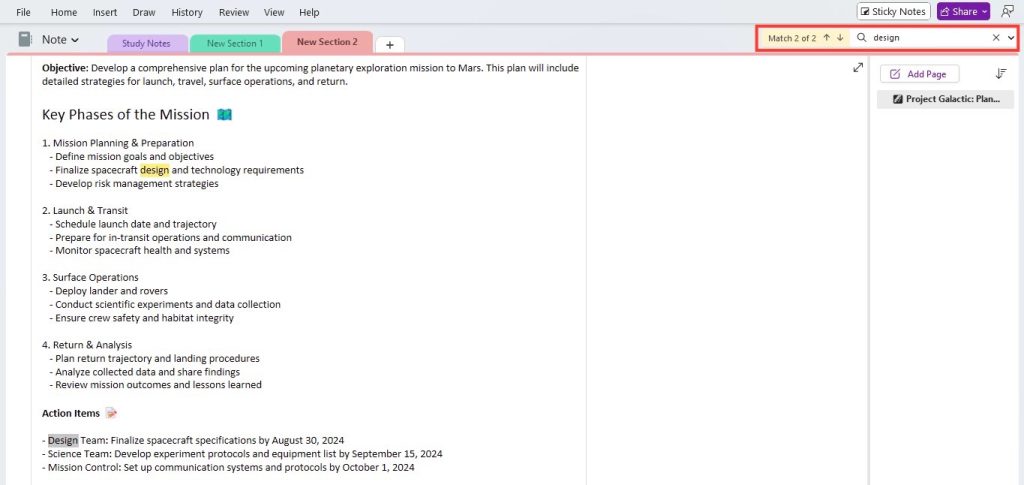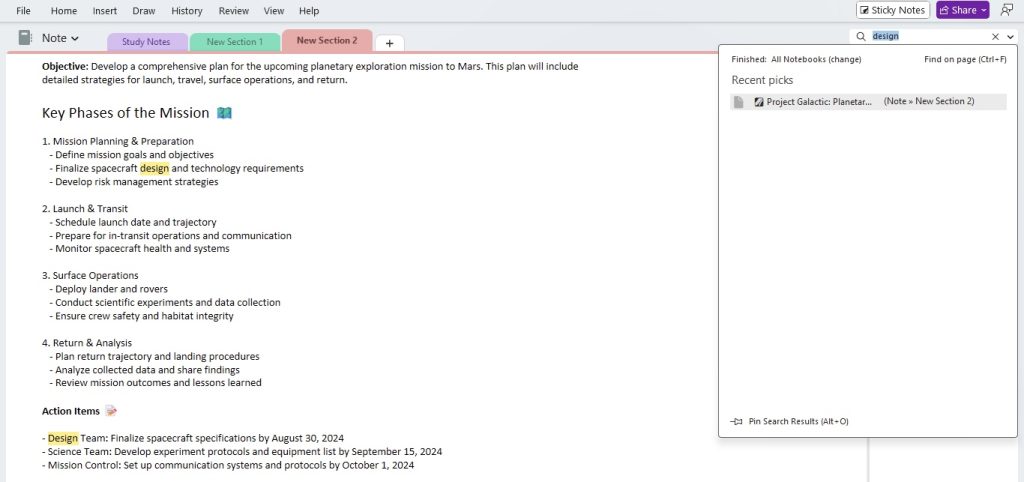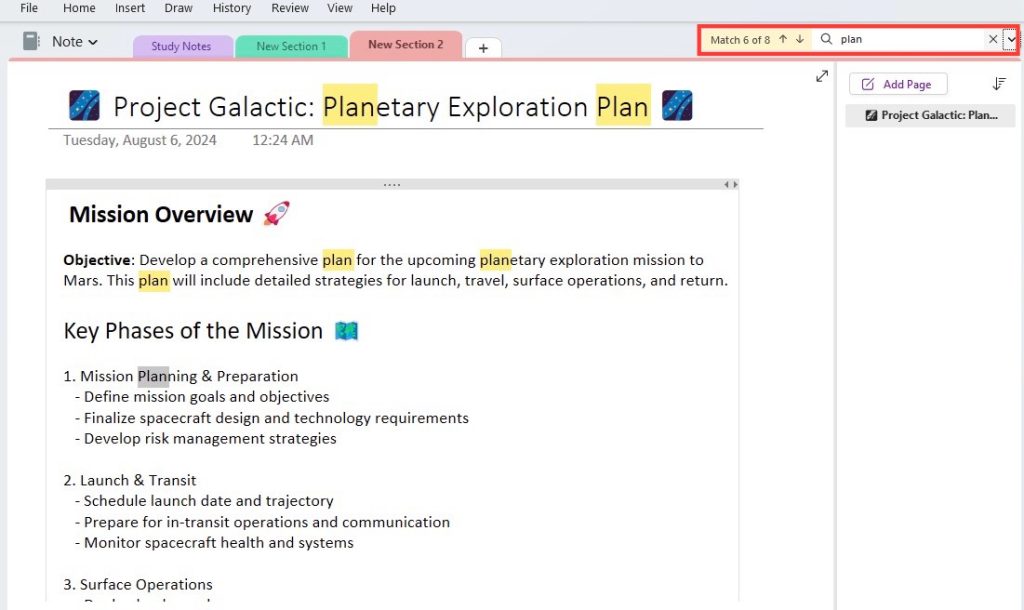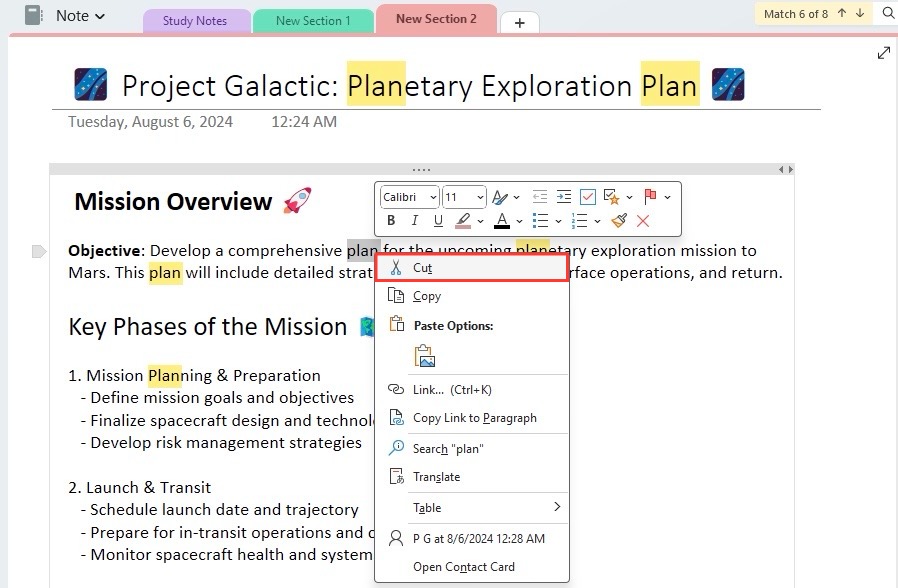When I first dived into Microsoft OneNote, I found its user interface to be robust yet intuitive. With various features like note-taking, drawing, and audio clips, it’s a powerful tool for organizing content. However, finding and replacing text within notes can initially seem imposing for new users, especially if you’re not familiar with the intricacies of OneNote’s UI. The process involves using the search feature effectively and might require additional tools if you’re looking to replace text across multiple notes.
Key Takeaways
- To manually find and replace in OneNote, you can use instant search to locate the text, copy the replacement text to the clipboard, then paste it over each found instance manually.
- Advanced search and replace functions, such as case-sensitive searches or replacing all instances at once, are not natively supported in OneNote, but can be accomplished by using OneNote PowerToys or by copying text to Word for batch find and replace.
- When using OneNote’s search feature, the search results pane helps you navigate to each occurrence of the searched text within your notes, but remember to manually adjust spaces and formatting after pasting the replacement text.
The Need for Efficient Editing Tools
As someone who’s constantly juggling a multitude of projects, I understand the value of efficient editing tools. OneNote, despite its comprehensive suite of note-taking features, can leave us wanting when it comes to quickly updating information. This is where the importance of having reliable find and replace functions comes into play. In a scenario where you’re updating a series of notes after a significant project change, or correcting repeated errors, manual edits can be cumbersome and incredibly time-consuming. Effective tools streamline this process, ensuring that our precious time and energy are conserved for creative endeavors rather than monotonous tasks.
Table of Contents
Mastering the Find Feature in OneNote
Locating Specific Text Fast
When I’m dealing with a bulky notebook in OneNote, locating specific phrases or terms swiftly is crucial. To achieve this, I use the Find feature, which acts like a beacon in a sea of text. It’s quite straightforward: I just hit “Ctrl+F” which prompts a search bar to materialize. After typing in the keyword, OneNote highlights every instance, allowing me to jump directly to the relevant snippets of text. This function becomes a time-saver, especially when I’m reviewing extensive notes or preparing for presentations and need to reference specific points without delay.
Tips for Effective Searching
In my experience, refining the search approach can enhance the accuracy of your findings significantly. It really pays off to use quotation marks when I’m in search of exact phrases in OneNote to prevent unrelated results from cluttering my view. Moreover, familiarizing myself with OneNote’s ability to filter searches by page titles or tags has been a game-charger for narrowing down results. I also recommend using wildcard characters, such as the asterisk (), to search for variations of a word. For instance, searching for “plan” might highlight “planning”, “planned”, and “planetary”, yielding broader results. Staying organized with clear page titles and tagging can be tremendously helpful as well, especially when regularly revisiting and editing notes.
Implementing Replace Functionality in OneNote
Overcoming the Absence of a Native Replace Feature
I’ve often felt the void left by the absence of a native Replace feature in OneNote. To circumvent this, I follow a series of steps that mimic this functionality. Here’s a workaround I use: I type the replacement text, cut it with “Ctrl+X,” search for the word I want to replace, and then manually paste the new text over each highlighted instance. I find that while this method may not be as swift as a native feature, it gets the job done in a pinch. It’s a testament to human ingenuity; where there’s a will to edit, there’s a way—even if it requires a bit more elbow grease.
Workarounds for Updating Text in Bulk
For those instances where I need to replace text in bulk across multiple OneNote pages or sections, one of my preferred strategies is to export the pages as PDFs or Word documents. Then, I can take advantage of the advanced find and replace features of Adobe Acrobat or Microsoft Word. This allows me to make large-scale changes with precision and speed. After the adjustments, I can re-import the content back into OneNote. While admittedly not a perfect solution, this method eases the burden when faced with extensive editing tasks and preserves the integrity of my notes.
Optimizing OneNote for Large Documents
Handling Bulk Edits Without Slowing Down
When it comes to handling bulk edits in OneNote, efficiency is key to preventing a slowdown in productivity. I use a dual approach: break down large notebooks into smaller sections and sync only the necessary ones while working on them. This minimizes the computational load and keeps OneNote running smoothly. Additionally, I regularly archive completed sections to a different notebook—this keeps the active notebook lean and more responsive. A well-maintained OneNote structure is instrumental in managing bulk edits, contributing to a smoother and faster editing process that won’t bog down my workflow.
Keeping Your Notebooks Organized During Intensive Editing
As I plunge into intensive editing sessions, keeping my notes organized is paramount. I’ve discovered that using OneNote’s built-in structure tools to create a clear hierarchy of notebooks, sections, and pages is incredibly helpful. As an additional measure, I also color-code and tag specific pages to easily track changes and edits. Additionally, I set aside time for regular reviews to reorganize and declutter my notes, ensuring that any bulk edits made previously haven’t created disarray. With an organized notebook, I find it far easier to navigate and manage content, maintaining a streamlined workflow even when edits become complex.
Troubleshooting Common Issues with Find and Replace
Dealing with Non-Responsive Search Functions
In my journey with OneNote, I’ve occasionally hit snags where the search function seems unresponsive. When this happens, my first step is to check the indexing status of my notes, as OneNote relies heavily on this for search functions. If the indexing is incomplete, I trigger a manual rebuild through the application’s settings. Restarting OneNote, or sometimes even my computer, can also coax the search into compliance. And for ongoing reliability, I make sure my OneNote updates are current, as outdated versions may have glitches that affect searching.
Resolving Formatting Problems After Replacement
Post-replacement formatting issues can be a thorn in my side, especially when I’m working on well-structured documents. To resolve this, I take a proactive approach—before implementing any replacements, I first ensure that my text is styled consistently throughout the document. Then, if formatting is disrupted, I employ OneNote’s ‘Format Painter’ tool to quickly replicate the desired formatting across different sections. In cases where text replacement involves external applications, I double-check the formatting in those applications before bringing the text back into OneNote. Moreover, keeping a log of the original formatting styles helps me swiftly revert any unwanted changes.
FAQ Section
How do I perform a basic text search in OneNote?
To perform a basic text search in OneNote, press Ctrl+F on Windows or ⌘+F on Mac. This opens the search bar where you can type the word or phrase you’re looking for. OneNote will highlight all the instances in your current page, allowing you to navigate through them easily.
How do you search a whole sentence in OneNote?
When I need to search for an entire sentence in OneNote, I enclose the sentence within quotation marks in the search bar. By using quotation marks, OneNote searches for the exact string of words in sequence, providing precise results amidst the plethora of individual word matches.
What are some limitations of OneNote’s find and replace capabilities?
OneNote’s primary limitation is the absence of a native find and replace feature for adjusting multiple instances across different pages or sections—users can only search and not replace in bulk. Another drawback is that searching within attachments or images isn’t possible unless the text is extracted via OCR technology first. Plus, there’s no case-sensitive search option built-in, which can limit precision.
John Michaloudis is a former accountant and finance analyst at General Electric, a Microsoft MVP since 2020, an Amazon #1 bestselling author of 4 Microsoft Excel books and teacher of Microsoft Excel & Office over at his flagship MyExcelOnline Academy Online Course.











